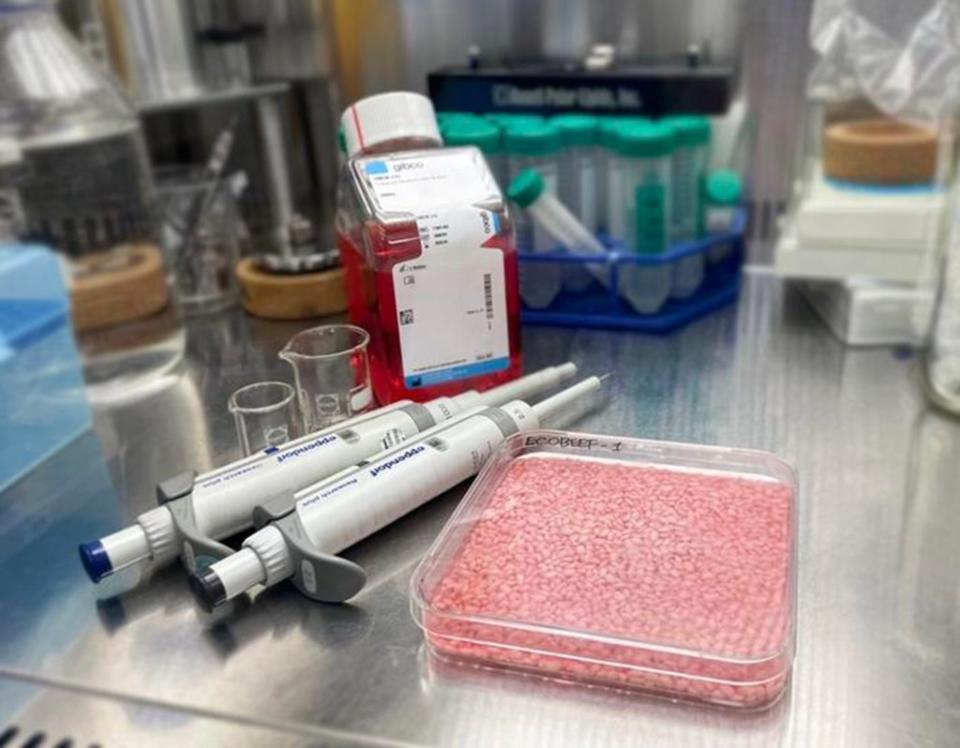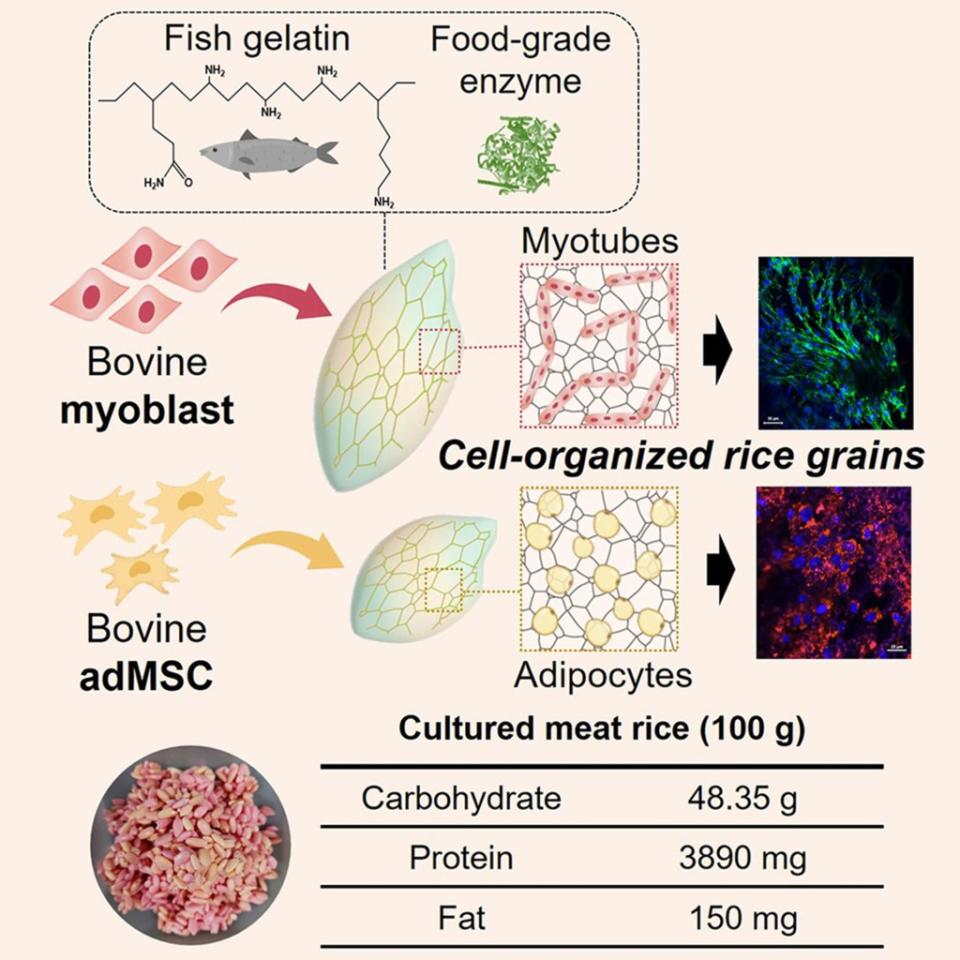Lab-grown ‘beef rice’ tastes like a sustainable protein — but critics say it’s no meat substitute

We’re in the pink.
Korean scientists have come up with an astonishing new type of lab-grown rice — one packed with animal protein.
The rose-tinted spectacle has hungry tongues wagging in the sustainable food community, after researchers successfully showed they had been able to infuse raw grains with beef and cow fat cells.
The bulked up rice was then covered in fish gelatin before being seeded with skeletal muscle and fat stem cells — and left to grow in a controlled laboratory environment, The Guardian reported.

Just nine to 11 days later, the mature grains were found to contain both fat and meat, transforming the mostly-carb into a more nutritious and flavorsome dish.
“When cooked, the rice retains its traditional appearance but carries a unique blend of aromas, including a slight nuttiness and umami which are characteristic of meat,” said project lead Professor Jinkee Hong of South Korea’s Yonsei University.
Hong said that he hopes this new kind of pink protein will find its place on dinner tables as an affordable source of nutrition — one with a tiny carbon footprint — as traditional beef becomes more expensive and people opt for other protein sources.
“While it does not exactly replicate the taste of beef, it offers a pleasant and novel flavor experience,” he said. “We tried it with various accompaniments and it pairs well with a range of dishes.”


Hong and team published their findings in the journal Matter, stating that their accomplishment could go toward making it “possible to ensure a sufficient food supply”, calling their creation “a new complete meal.”
Some experts aren’t so quickly convinced.
“The product is still basically rice and would be used to replace rice or other carbohydrate sources in a meal,” said Prof. Nanna Tuomisto, who researches sustainable food systems at the University of Helsinki.
“For replacing meat, the percentage of the protein in the final product would need to be higher.”
The finished product is just 0.5% meat and 99.5% rice.
But that didn’t stop Neil Ward, a professor of rural and regional development at the University of East Anglia, from expressing enthusiasm over the project’s potential impact.
Getting animal nutrients onto plates with eight times fewer greenhouse gas emissions and at one-sixth of the cost of meat sounds like a great deal, he told The Guardian.
“This line of research holds promise for the development of healthier and more climate-friendly diets in future,” he said.
Producing 100 grams of beef protein can require roughly 50 kg of carbon dioxide. By comparison, 100 grams of the protein in hybrid rice would release under 6.5% of the globe-harming gas.
Affordability could also become a selling point — $2.23 per kilogram of rice compared to $14.33 for beef, for example.
Future versions of the rice could also be produced using other, cheaper types of meat and fish protein, Hong said.

 Yahoo News
Yahoo News 
